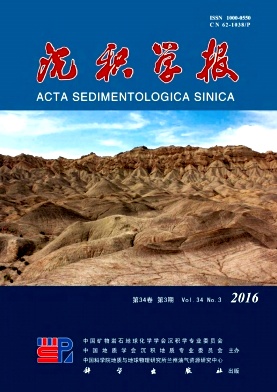Detrital Heavy Mineral Assemblages in the River Sediments from Taiwan and Its Implications for Sediment Provenance
doi: 10.14027/j.cnki.cjxb.2016.03.011
- Received Date: 2015-10-12
- Rev Recd Date: 2015-12-24
- Publish Date: 2016-06-10
-
Key words:
- Taiwan /
- Zhuoshui River /
- Lanyang River /
- heavy mineral /
- provenance analysis
Abstract: A total of 384 Mt/yr of suspended sediment is supplied to ocean by small mountainous rivers in Taiwan (1970—1999), equivalent to the sum of sediment discharge from three major rivers (the Yangtze River, the Yellow River and the Pearl River) in China. Hence, it has an appreciable impact on the sedimentary process of the epicontinental shelf. There are altogether 151 rivers in Taiwan, most of which originate from the Central Range. For our study river basins, the Zhuoshui River and the Lanyang River feed into the Taiwan Strait and the Pacific Ocean, respectively. The Zhuoshui River flows through the western Central Range, the Hsuehshan Range, the Western Foothills and the Coastal Plain in turn. And sequences of the Hsuehshan Range and the western Central Range outcrop in the Lanyang River basin. Heavy mineral types and contents of eight sediment samples from the Zhuoshui River (ZS1~ZS5) and the Lanyang River (LY1~LY3) are analyzed in whole size fraction. Twenty kinds of heavy minerals are identified. The weight percentage of heavy minerals varies from 0.039% to 0.116% in the Zhuoshui River, and from 0.004% to 0.040% in the Lanyang River. On the whole, the weight percentage declines from upstream to downstream.
There is an irregular spatial distribution of heavy mineral assemblages along both rivers. For the Zhuoshui River, the dominated heavy mineral assemblage is pyrite-limonite-magnetite in the upper reaches, zircon-limonite-magnetite-pyrite in the middle reaches, zircon-garnet-limonite-ilmenite-anatase-leucoxene in the lower reaches. For the Lanyang River, the dominated heavy mineral assemblage is zircon-epidote-pyrite in the upper reaches, zircon-magnesite-limonite-leucoxene in the middle reaches, zircon-magnesite-limonite-anatase-pyrite in the lower reaches. Variations of heavy mineral types and contents along the two rivers indicate that most sediments are mainly supplied by proximal source rocks, and signatures of heavy minerals from upstream are masked. Also, there exists difference in contributions to sediments between potential provenances: heavy minerals in the lower reaches of both rivers are mostly derived from Quaternary sediments, and in the upper reaches mainly supplied by Lushan Formation of the Central Range. In addition, because the distribution of heavy mineral assemblages is primarily controlled by source rocks, some heavy mineral indexes (ATi, GZi and ZTR) cannot be used properly in these small mountainous rivers.
The differences in bedrocks between mainland and Taiwan make the heavy mineral assemblages different between both sides of the strait. The typical heavy minerals in the rivers of Chinese mainland, like magnetite and epidote, are not common in the Taiwanese Rivers. However, the enrichment of zircon, magnesite and pyrite in the mouth of the Lanyang River, and the enrichment of zircon and garnet in the mouth of the Zhuoshui River, are there respective characteristics. All these features may offer some reference value for tracing the provenances of sediments in the epicontinental shelf.
| Citation: | DENG Kai, YANG ShouYe, WANG ZhongBo, LI Chao, BI Lei, Yuan-pin CHANG, James T.LIU. Detrital Heavy Mineral Assemblages in the River Sediments from Taiwan and Its Implications for Sediment Provenance[J]. Acta Sedimentologica Sinica, 2016, 34(3): 531-542. doi: 10.14027/j.cnki.cjxb.2016.03.011 |






 DownLoad:
DownLoad: